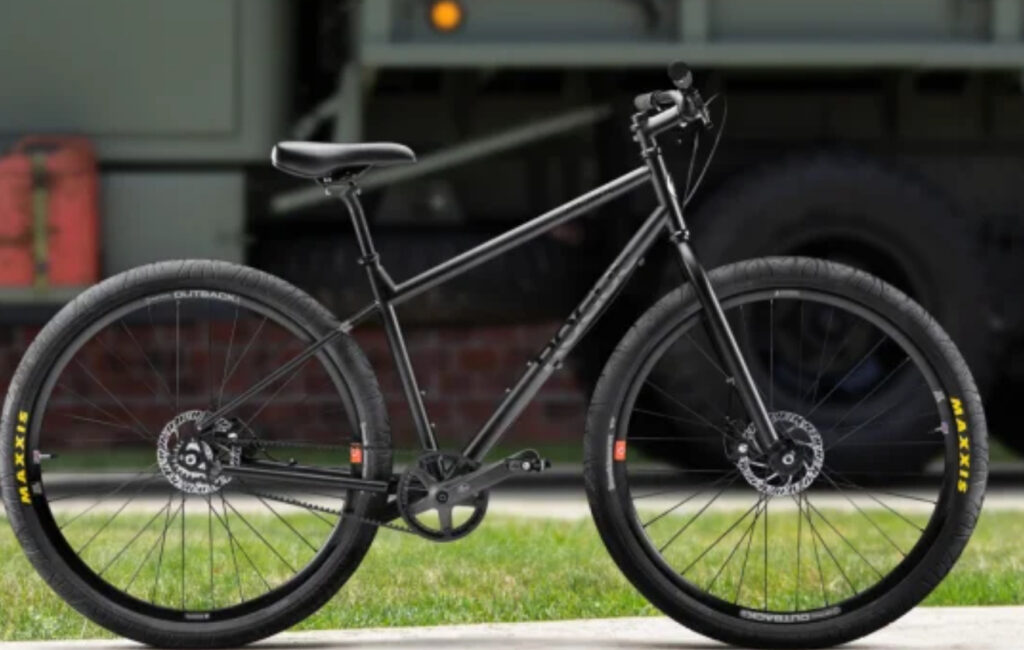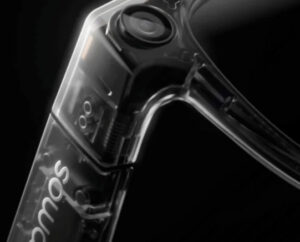In a cycling landscape often saturated with mass-produced conformity, there is something quietly radical about the Milo Commuter — a minimalist yet technically masterful machine handcrafted by Stinner Frameworks in the heart of Santa Barbara, California. The bike, born from a dedication to clean design and elevated function, represents more than just a utilitarian object: it is a philosophical commitment to craftsmanship, longevity, and the urban human experience. Featuring a belt drive system at its mechanical heart, the Milo Commuter presents a vision of cycling stripped of superfluous noise — both literally and figuratively.
At once rugged and refined, the Rogue Milo Commuter stakes a claim for a new kind of urban cycling ethos, one where design sensibility, material integrity, and mechanical innovation coalesce into a daily ritual of motion. This is a story about slowing down to build better, to ride differently, and to rethink what a commuter bike can — and should — be.
The Stinner Ethos: Handmade Matters
Since its founding by Aaron Stinner in 2010, Stinner Frameworks has operated outside the gravitational pull of mainstream cycling trends. In an era where “performance” is often synonymous with carbon-fiber ultralights and rapid obsolescence, Stinner chose another path — a return to artisanry, deliberate design, and heirloom-level durability. Every frame bearing the Stinner badge is handbuilt from premium steel or titanium, executed with surgical precision, and tailored to purpose.
The Milo Commuter is the company’s answer to the daily rider’s needs — and it arrives without the high drama of racing narratives or hyperbolic aero claims. Instead, Stinner applies the same obsessive attention to geometry, welding, and finishing to a bike meant for the tactile realities of city life: potholes, rain, locks, and long, contemplative rides home after dark.
Where many brands have automated and outsourced, Stinner insists on human touch. Each weld, each alignment, each coat of paint carries with it the fingerprint of its creator. This is slow manufacturing — an idea almost rebellious in today’s marketplace — and it is precisely this ethos that shapes the soul of the Milo.
Belt Drive: The Silent Revolution
At the heart of the Milo’s mechanical soul lies one of its most defining features: a Gates Carbon Drive belt system. In a world long dominated by oily chains and jangling derailleurs, the belt drive offers a near-silent, maintenance-free alternative that transforms the ride experience.
Traditional chains require constant lubrication, stretch over time, and degrade under the city’s punishing stop-start rhythms. By contrast, a carbon-reinforced belt is impervious to rust, immune to stretch, and promises thousands of miles without so much as a thought. It is a technology drawn from motorcycles and industrial machinery, engineered for reliability under stress — and it finds an almost poetic application in urban cycling.
The Gates Carbon Drive CDX used on the Milo is not merely functional; it is a declaration. It declares that performance need not shout. That elegance can be quiet. That strength need not be brash. Combined with an internally geared hub — often a Rohloff or Alfine setup depending on customization — the belt drive eliminates exposed cogs and derailleurs, offering a smoothness that feels almost metaphysical compared to traditional drivetrain clatter.
Riders note an almost eerie serenity in the Milo’s motion. There is no rattle, no metallic grind, only the clean hum of rubber meeting asphalt. In the clamor of urban life, such silence becomes its own kind of luxury.
Design Language: Functional Minimalism
Visually, the Milo Commuter is an exercise in restraint. Clean lines, purposeful forms, and a conspicuous absence of branding define its aesthetic. Every visual element is in service of use — and yet, paradoxically, it is this functionality that becomes its beauty.
The geometry is subtly tuned for city riding: slightly upright for visibility and comfort, yet with enough responsiveness to handle sudden changes in direction and pace. Tire clearance is generous — often up to 38mm or more — allowing for supple rubber that smooths out rough city streets and gravel detours alike. Discreet rack and fender mounts are integrated without cluttering the silhouette, enabling practical customization without aesthetic compromise.
Paint options, often done in-house, range from muted earth tones to striking custom finishes, each meticulously layered and hand-polished. Unlike mass-market bikes that often lean on loud graphics to distract from generic frames, Stinner’s approach is almost architectural: form, surface, and line merge into a quiet but commanding presence.
This is a bike that resists trend-chasing. It speaks to a deeper sensibility — one that values longevity over novelty, substance over flash.
Rogue Milo: A Study in Intentional Ruggedness
The specific Rogue Milo Commuter edition takes this philosophy a step further. Built for riders who view the city not as a perfectly paved grid but as a living, unpredictable organism, the Rogue Milo embraces resilience without sacrificing elegance.
Key upgrades on the Rogue spec often include:
- Oversized tubing for added strength and responsiveness under load.
- Thru-axle dropouts for enhanced wheel stiffness and security.
- Hydraulic disc brakes to ensure stopping power in all weather conditions.
- Integrated lighting systems, often Dynamo-powered, for seamless illumination without dependence on removable lights.
- Custom cargo solutions, including low-profile front racks, enabling the transport of gear, groceries, or a day’s necessities without resorting to backpacks.
Each detail of the Rogue Milo feels like an invitation — not to race or to perform, but simply to move through the world with intention, grace, and resilience. It is a bike for those who reject the binary of “sport” and “transport,” seeking instead a daily ritual of riding that is at once mindful and liberating.
Urban Cycling Reimagined: Beyond Utility
The Milo Commuter challenges the assumption that practical bikes must be boring. It reimagines the commuter not as a tool to endure but as an experience to savor. In this sense, the Milo is as much about mindset as it is about mechanics.
To ride the Milo is to embrace:
- Silence over noise.
- Durability over disposability.
- Craftsmanship over mass production.
- Slowness — not in speed, but in the deliberate appreciation of the ride.
There is a certain contrarian wisdom in riding a belt-driven, hand-welded steel commuter in a world obsessed with carbon fiber grams and GPS watts. It speaks to a deeper value system, one rooted in sustainability, locality, and human connection.
In cities where life often feels compressed, digital, and accelerated, the Milo offers a tactile antidote. It invites a reconnection with motion, material, and the physical world.
Sustainability: A Byproduct of Quality
While sustainability is often co-opted into greenwashing campaigns, in the case of the Milo, it is an authentic consequence of quality. A bike built to last decades — one that can be repaired, repainted, and upgraded over time — is inherently sustainable.
Steel and titanium, the materials of choice for Stinner frames, are infinitely recyclable. Belt drives eliminate the constant churn of chain replacements and lubrication waste. Internal gear hubs, protected from the elements, last for tens of thousands of miles with minimal intervention.
Moreover, the very act of building frames locally, by hand, supports small-scale economies and reduces the carbon footprint associated with overseas mass production. Stinner is not shouting about sustainability — it simply practices it, as a natural outgrowth of its values.
Thoughts
As the world hurtles forward into an increasingly disposable future, the Milo stands as a reminder that the best objects are those built slowly, used daily, and cherished for a lifetime.
No comments yet.









